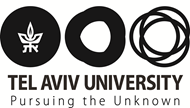Finance - Accounting Seminars
(Semester A- Academic Year 2025-2026)
| Date | Lecturer | Affiliation | Topic | Room | |
|---|---|---|---|---|---|
| Nov 11 Tuesday |
Shiki levi | Hebrew University | 305 | ||
| Nov 18 | Amir Amel-Zadeh | Oxford |
Cancelled
|
|
|
| Nov 25 | Evgeny Lyandres | Tel Aviv University |
Noisy Truth Beats Precise Lies: Blockchain-Enabled Information Equilibria
Truth-telling is essential to efficient allocation of resources but is often undermined by strategic misreporting. We show how verifiably fair randomness, complemented by other blockchain functionalities, can lead to truth-telling at the cost of introduction of random noise in information transmission. The optimal trade-off between truthfulness and precision yields equilibria that outperform those attainable without randomization in information transmission. We characterize two classes of information equilibria: information designated to directly trigger value transfer via decentralized consensus (“enforcive information”), and strategic information sharing between Bayesian-rational decision makers (“advisive information”). Our findings demonstrate usefulness of randomized transmission in broad financial settings and illustrate the benefits of blockchain technology for optimal mechanism design.
|
305 | |
| Dec 2 Tuesday |
Nittai Bergman | Tel Aviv University |
TBD
TBD
|
305 | |
| Dec 9 Tuesday |
Bernard Black | Kellogg |
TBD
TBD
|
305 | |
| Dec 23 Tuesday |
Israel Klein | Ariel University |
TBD
TBD
|
305 | |
| Dec 30 Tuesday |
Alon Raviv | Bsr Ilan University |
TBD
TBD
|
305 | |
| Jan 6 | Niki Kotsenko | Alrov Center TAU |
PreSale, Credit Constrainsts and Housing Supply
TBD
|
305 | |
| Jan 13 Tuesday |
Osnat Zohar | Bank of Israel |
TBD
TBD
|
305 |
Past Seminars List
- Link to Spring 2024-2025
- Link to Fall 2024-2025
- Link to Spring2023-2024
- Link to Spring2022-2023
- Link to Fall 2022-2023
- Link to Spring 2021-2022
- Link to Fall 2021-2022
- Link to Spring 2020-2021
- Link to Fall 2020-2021
- Link to Spring 2019-2020
- Link to Fall 2019-2020
- Link to Spring 2018-2019
- Link to Fall 2018-2019
- Link to Spring 2017-2018
- Link to Fall 2017-2018
- Link to Spring 2016-2017
- Link to Fall 2016-2017
- Link to Spring 2015-2016
- Link to Fall 2015-2016
- Link to Spring 2014-2015
- Link to Fall 2014-2015
- Link to Spring 2013-2014
- Link to Fall 2013-2014
- Link to Spring 2012-2013
- Link to Fall 2012-2013
- Link to Spring 2011-2012
- Link to Fall 2011-2012
- Link to Spring 2010-2011
- Link to Fall 2010-2011


